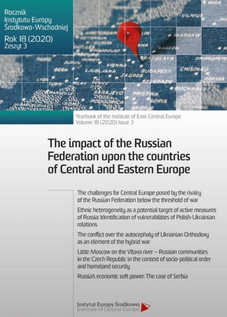Unique or modular? Armenian Velvet Revolution in comparative approach
Unique or modular? Armenian Velvet Revolution in comparative approach
Author(s): Bartłomiej KrzysztanSubject(s): Civil Society, Political history, Government/Political systems, Political behavior, Politics and society, Studies in violence and power, Present Times (2010 - today), Peace and Conflict Studies
Published by: Instytut Europy Środkowej
Keywords: Armenian Velvet Revolution; Armenia; revolution; post-Soviet revolutions; democratization;
Summary/Abstract: Most of the previous revolutions in the post-Soviet sphere were concentrated around two dimensions: reluctance to challenge abuses of power and the will to redirect the external trajectory. The Armenian Velvet Revolution marked the change of the axiology of revolution. Civil disobedience was only focused on the corrupt political system based on clientelism and patronage. It was not addressing any issues related to the international situation. In statements, activists avoided references to foreign policy and change of geopolitical direction. The purpose of the paper is to identify convergent and separate features characterizing the Velvet Revolution in comparison with breakthroughs classified as revolutions in the post-Soviet space after 1989. The research question is how the Armenian Velvet Revolution’s features stand out from previous revolutionary changes of power in the post-Soviet space, and to what extent they are convergent. The theoretical framework is based on multi-dimensional academic reflection on the factors characterizing particular revolutionary waves in post-Soviet space. Using comparatively the rich achievements of study on the Autumn of Nations, Color Revolutions, and Ukrainian Revolution of Dignity, this essay aims to inscribe the unique and modular factors characterizing the Armenian Velvet Revolution into a broader spectrum of theoretical and practical considerations on political breakthroughs in post-Soviet space.
Journal: Rocznik Instytutu Europy Środkowo-Wschodniej
- Issue Year: 18/2020
- Issue No: 3
- Page Range: 143-171
- Page Count: 29
- Language: English

